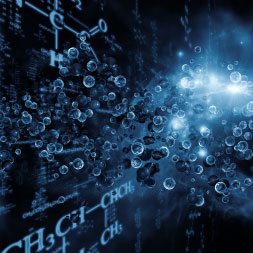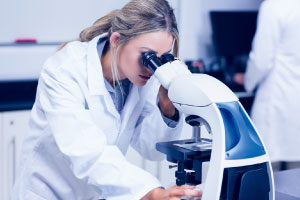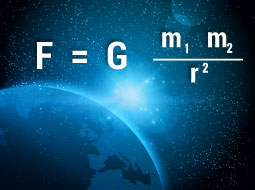Online courses directory (273)
Engineering principles of nuclear reactors, emphasizing power reactors. Topics include power plant thermodynamics, reactor heat generation and removal (single-phase as well as two-phase coolant flow and heat transfer), structural mechanics, and engineering considerations in reactor design.
Relationship between angular velocity and speed. Why Distance is Area under Velocity-Time Line. Introduction to Vectors and Scalars. Calculating Average Velocity or Speed. Solving for Time. Displacement from Time and Velocity Example. Acceleration. Balanced and Unbalanced Forces. Unbalanced Forces and Motion. Newton's First Law of Motion. Newton's First Law of Motion Concepts. Newton's First Law of Motion. Newton's Second Law of Motion. Newton's Third Law of Motion. Airbus A380 Take-off Time. Airbus A380 Take-off Distance. Average Velocity for Constant Acceleration. Acceleration of Aircraft Carrier Takeoff. Race Cars with Constant Speed Around Curve. Introduction to Gravity. Mass and Weight Clarification. Gravity for Astronauts in Orbit. Would a Brick or Feather Fall Faster. Deriving Displacement as a Function of Time, Acceleration and Initial Velocity. Plotting Projectile Displacement, Acceleration, and Velocity. Projectile Height Given Time. Deriving Max Projectile Displacement Given Time. Impact Velocity From Given Height. Visualizing Vectors in 2 Dimensions. Projectile at an Angle. Different Way to Determine Time in Air. Launching and Landing on Different Elevations. Total Displacement for Projectile. Total Final Velocity for Projectile. Correction to Total Final Velocity for Projectile. Projectile on an Incline. Unit Vectors and Engineering Notation. Clearing the Green Monster at Fenway. Green Monster at Fenway Part 2. Optimal angle for a projectile part 1. Optimal angle for a projectile part 2 - Hangtime. Optimal angle for a projectile part 3 - Horizontal distance as a function of angle (and speed). Optimal angle for a projectile part 4 Finding the optimal angle and distance with a bit of calculus. Slow Sock on Lubricon VI. Normal Forces on Lubricon VI. Normal Force and Contact Force. Normal Force in an Elevator. Inclined Plane Force Components. Ice Accelerating Down an Incline. Force of Friction Keeping the Block Stationary. Correction to Force of Friction Keeping the Block Stationary. Force of Friction Keeping Velocity Constant. Intuition on Static and Kinetic Friction Comparisons. Static and Kinetic Friction Example. Introduction to Tension. Introduction to Tension (Part 2). Tension in an accelerating system and pie in the face. Introduction to Momentum. Momentum: Ice skater throws a ball. 2-dimensional momentum problem. 2-dimensional momentum problem (part 2). Introduction to work and energy. Work and Energy (part 2). Conservation of Energy. Work/Energy problem with Friction. Introduction to mechanical advantage. Mechanical Advantage (part 2). Mechanical Advantage (part 3). Center of Mass. Introduction to Torque. Moments. Moments (part 2). Unit Vector Notation. Unit Vector Notation (part 2). Projectile Motion with Ordered Set Notation. Projectile motion (part 1). Projectile motion (part 2). Projectile motion (part 3). Projectile motion (part 4). Projectile motion (part 5). Centripetal Force and Acceleration Intuition. Visual Understanding of Centripetal Acceleration Formula. Calculus proof of centripetal acceleration formula. Loop De Loop Question. Loop De Loop Answer part 1. Loop De Loop Answer part 2. Acceleration Due to Gravity at the Space Station. Space Station Speed in Orbit. Conservation of angular momentum. Introduction to Newton's Law of Gravitation. Gravitation (part 2). Viewing g as the value of Earth's Gravitational Field Near the Surface. Intro to springs and Hooke's Law. Potential energy stored in a spring. Spring potential energy example (mistake in math). Introduction to Harmonic Motion. Harmonic Motion Part 2 (calculus). Harmonic Motion Part 3 (no calculus).
Thermodynamics (part 1). Thermodynamics (part 2). Thermodynamics (part 3). Thermodynamics (part 4). Thermodynamics (part 5). Macrostates and Microstates. Quasistatic and Reversible Processes. First Law of Thermodynamics/ Internal Energy. More on Internal Energy. Work from Expansion. PV-diagrams and Expansion Work. Proof: U=(3/2)PV or U=(3/2)nRT. Work Done by Isothermic Process. Carnot Cycle and Carnot Engine. Proof: Volume Ratios in a Carnot Cycle. Proof: S (or Entropy) is a valid state variable. Thermodynamic Entropy Definition Clarification. Reconciling Thermodynamic and State Definitions of Entropy. Entropy Intuition. Maxwell's Demon. More on Entropy. Efficiency of a Carnot Engine. Carnot Efficiency 2: Reversing the Cycle. Carnot Efficiency 3: Proving that it is the most efficient. Enthalpy. Heat of Formation. Hess's Law and Reaction Enthalpy Change. Gibbs Free Energy and Spontaneity. Gibbs Free Energy Example. More rigorous Gibbs Free Energy/ Spontaneity Relationship. A look at a seductive but wrong Gibbs/Spontaneity Proof. Stoichiometry Example Problem 1. Stoichiometry Example Problem 2. Limiting Reactant Example Problem 1. Empirical and Molecular Formulas from Stoichiometry. Example of Finding Reactant Empirical Formula. Stoichiometry of a Reaction in Solution. Another Stoichiometry Example in a Solution. Molecular and Empirical Forumlas from Percent Composition. Hess's Law Example. Thermodynamics (part 1). Thermodynamics (part 2). Thermodynamics (part 3). Thermodynamics (part 4). Thermodynamics (part 5). Macrostates and Microstates. Quasistatic and Reversible Processes. First Law of Thermodynamics/ Internal Energy. More on Internal Energy. Work from Expansion. PV-diagrams and Expansion Work. Proof: U=(3/2)PV or U=(3/2)nRT. Work Done by Isothermic Process. Carnot Cycle and Carnot Engine. Proof: Volume Ratios in a Carnot Cycle. Proof: S (or Entropy) is a valid state variable. Thermodynamic Entropy Definition Clarification. Reconciling Thermodynamic and State Definitions of Entropy. Entropy Intuition. Maxwell's Demon. More on Entropy. Efficiency of a Carnot Engine. Carnot Efficiency 2: Reversing the Cycle. Carnot Efficiency 3: Proving that it is the most efficient. Enthalpy. Heat of Formation. Hess's Law and Reaction Enthalpy Change. Gibbs Free Energy and Spontaneity. Gibbs Free Energy Example. More rigorous Gibbs Free Energy/ Spontaneity Relationship. A look at a seductive but wrong Gibbs/Spontaneity Proof. Stoichiometry Example Problem 1. Stoichiometry Example Problem 2. Limiting Reactant Example Problem 1. Empirical and Molecular Formulas from Stoichiometry. Example of Finding Reactant Empirical Formula. Stoichiometry of a Reaction in Solution. Another Stoichiometry Example in a Solution. Molecular and Empirical Forumlas from Percent Composition. Hess's Law Example.
In this course, students explore the engineering design of nuclear power plants using the basic principles of reactor physics, thermodynamics, fluid flow and heat transfer. Topics include reactor designs, thermal analysis of nuclear fuel, reactor coolant flow and heat transfer, power conversion cycles, nuclear safety, and reactor dynamic behavior.
Introduction to Waves. Amplitude, Period, Frequency and Wavelength of Periodic Waves. Introduction to the Doppler Effect. Doppler effect formula when source is moving away. When the source and the wave move at the same velocity. Mach Numbers. Specular and Diffuse Reflection. Specular and Diffuse Reflection 2. Refraction and Snell's Law. Refraction in Water. Snell's Law Example 1. Snell's Law Example 2. Total Internal Reflection. Virtual Image. Parabolic Mirrors and Real Images. Parabolic Mirrors 2. Convex Parabolic Mirrors. Convex Lenses. Convex Lens Examples. Doppler effect formula for observed frequency. Concave Lenses. Object Image and Focal Distance Relationship (Proof of Formula). Object Image Height and Distance Relationship. Introduction to Waves. Amplitude, Period, Frequency and Wavelength of Periodic Waves. Introduction to the Doppler Effect. Doppler effect formula when source is moving away. When the source and the wave move at the same velocity. Mach Numbers. Specular and Diffuse Reflection. Specular and Diffuse Reflection 2. Refraction and Snell's Law. Refraction in Water. Snell's Law Example 1. Snell's Law Example 2. Total Internal Reflection. Virtual Image. Parabolic Mirrors and Real Images. Parabolic Mirrors 2. Convex Parabolic Mirrors. Convex Lenses. Convex Lens Examples. Doppler effect formula for observed frequency. Concave Lenses. Object Image and Focal Distance Relationship (Proof of Formula). Object Image Height and Distance Relationship.
Matter exists in four states - solid, liquid, gas and plasma and it will change state depending on the temperature and pressure applied to the matter. In this free online chemistry course about states of matter you will learn about the characteristics of each of the four states and the amount of energy that can be added to or taken from a substance before it starts to change state. As all substances change state at different temperatures and pressures you will learn how to use phase change diagrams to plot the energy and pressure levels, the triple point, critical temperature, boiling and melting points associated with different substances. You will also learn in a step by step manner how to calculate the change in energy needed to move a substance along the state of matter spectrum. This free online chemistry course will be of great interest to all students who wish to pursue a career in any of the sciences such as chemistry, physics, biology or geology, or the individual learner who simply wants to learn and understand what is happening when matter changes from solid to liquid to gas.<br />
The free online Diploma in General Science course from ALISON is ideal for anyone who wants to gain a comprehensive knowledge and understanding of key subjects in biology, chemistry and physics. In biology you will covers subjects such as cell theory, genetics and evolution; in chemistry you will cover subjects such as atoms, molecules and the periodic table; and in physics you will cover subjects such as magnetism, electricity and sound. This Diploma course will be of great interest to those who want to further improve their knowledge and understanding of general science, and will greatly enhance your career prospects.<br />
Using vectors to study motion is a fundamental skill to have when studying physics. Vector quantities used to describe the physical world include displacement, velocity, acceleration, and force. In this free online physics course the standard way to represent vectors and their axes as well as unit vector notation are explained in a clear and step-by-step manner. Examples show how to work out the angle or distance necessary to get the desired displacement. Using two known variables you will learn how to work through the process of calculating the remaining value, such as time in air or horizontal displacement using a variety of techniques. This free online physics course will be of great interest to students who are studying physics, chemistry, engineering, mathematics, and to students who wish to pursue a career in any of the sciences or engineering fields, and even the sportsperson who wants to plan for a specific outcome when hitting a golf ball or batting a ball.<br />
This course introduces fundamental properties of the neutron. It covers reactions induced by neutrons, nuclear fission, slowing down of neutrons in infinite media, diffusion theory, the few-group approximation, point kinetics, and fission-product poisoning. It emphasizes the nuclear physics bases of reactor design and its relationship to reactor engineering problems.
An introduction to the principles of tomographic imaging and its applications. It includes a series of lectures with a parallel set of recitations that provide demonstrations of basic principles. Both ionizing and non-ionizing radiation are covered, including x-ray, PET, MRI, and ultrasound. Emphasis on the physics and engineering of image formation.
Cognitive robotics addresses the emerging field of autonomous systems possessing artificial reasoning skills. Successfully-applied algorithms and autonomy models form the basis for study, and provide students an opportunity to design such a system as part of their class project. Theory and application are linked through discussion of real systems such as the Mars Exploration Rover.
Gravity is the force that keeps us on the ground and understanding how gravity works is very important as it has a great influence on the upward and downward movement of objects. This free online course about gravity will explain Newton’s Second Law of Motion, the universal constant, which is used to work out the force of gravity throughout the universe. You will also learn what the effect of the earth's force of gravity, or little g as it is known, has on an object and why mass is not the same as weight. To fully understand gravity this course will take you step-by-step through the relevant formulas, showing you how to calculate velocity or distance based on time and then plot these changes so you will have a visual concept of what is happening. This course will be of great interest to students who are studying physics, chemistry, engineering, mathematics, and to students who wish to pursue a career in any of the sciences or engineering fields.<br />
Calculating change in motion is a very important concept to master in physics. When change happens in one dimension it is relatively easy to calculate the variable. However, change rarely happens in just one direction so you need to learn how to manage more than one variable. This free online physics course explains how to visually represent each change in a dimension as a vector so that it can be easily understood. You will learn how to add two vectors together and calculate all the relevant information for the resulting third vector. Working through various examples, including different elevations and inclines, you will learn how to solve for any variable through the use of the right-angled triangle and then use trigonometry and quadratic equations to calculate the relevant variables. This free online physics course will be of great interest to students who are studying physics, chemistry, engineering and mathematics and to any individual who wants to learn more about the movement of objects in two dimensions.<br />
In physics the study of movement and the motion of objects is called kinematics and is a branch of mechanics. The study of the motion of objects focuses on topics such as acceleration, position and velocity. In this free online course you will investigate the movement of objects by looking at the real-world application of kinematics. You will see how to answer interesting questions such as what distance does the Airbus A380 need for take-off, how long it takes for an FA-18 Hornet to take off from an aircraft carrier, and do race cars accelerate when cornering even if travelling at a constant speed. The course will walk you through a number of formulae, demystifying them by explaining and rearranging them in a clear and easy to understand way. This course will be of great interest to students who are studying physics, chemistry, engineering and mathematics, to students who wish to pursue a career in any of the sciences or engineering fields, and to the learner who wants to see how science can answer real-world questions.<br />
Motion, speed and time are three fundamental concepts in basic physics and they are important building blocks for understanding more advanced topics. This free online course introduces you to how distance, speed, time and mass are combined to give displacement, velocity, force and acceleration. Newton’s 3 Laws of Motion, which are the bedrock of much of our understanding of physics today, are also introduced and explained in a clear and concise manner. Along with explanations of the formulae used, a number of examples are worked through, giving a full understanding of the subject. References are also made as to how these formulae are used in real-world situations. By studying this course you will gain a clearer knowledge and understanding of important topics in basic physics. This course will be of great interest to students who are studying physics, chemistry, engineering, mathematics and some medical sciences, and to students who wish to pursue a career in any of the sciences or engineering fields, and to the individual who wants to understand how the world around us works.<br />
This course introduces the design of feedback control systems as applied to a variety of air and spacecraft systems. Topics include the properties and advantages of feedback systems, time-domain and frequency-domain performance measures, stability and degree of stability, the Root locus method, Nyquist criterion, frequency-domain design, and state space methods.
Physics 140 offers introduction to mechanics, the physics of motion. Topics include: linear motion, vectors, projectiles, relative velocity and acceleration, Newton's laws, particle dynamics, work and energy, linear momentum, torque, angular momentum, gravitation, planetary motion, fluid statics and dynamics, simple harmonic motion, waves and sound. Course Level: Undergraduate This Work, Physics 140 - General Physics 1, by Gus Evrard is licensed under a Creative Commons Attribution license.
Study physics abroad in Europe -- virtually! Learn the basics of physics on location in Italy, the Netherlands and the UK, by answering some of the discipline's major questions from over the last 2000 years.
Understanding the concept of force and the effects various forces have on objects are very important topics in physics. For example, when you try to move a heavy object it takes more effort to get it moving than to keep it moving because of gravity and the different types of friction involved. In this free online physics course you will learn more about the force of gravity and its counterpart the normal force, and why some objects do not move even when they are on a slope. The force of friction is also discussed, including static and kinetic types, and as friction is dependent on types of the materials involved the course also looks at the coefficient of static friction relative to kinetic friction. Examples of each type of force are worked through giving the learner a clear insight into how forces work together and how to calculate their respective values. This free online physics course will be of great interest to students who are studying physics, chemistry, engineering and mathematics, to students who wish to pursue a career in any of the sciences or engineering fields, and to anybody wanting to understand the dynamics of moving objects on specific surfaces.<br />
In 6.635, topics covered include: special relativity, electrodynamics of moving media, waves in dispersive media, microstrip integrated circuits, quantum optics, remote sensing, radiative transfer theory, scattering by rough surfaces, effective permittivities, random media, Green's functions for planarly layered media, integral equations in electromagnetics, method of moments, time domain method of moments, EM waves in periodic structures: photonic crystals and negative refraction.
Trusted paper writing service WriteMyPaper.Today will write the papers of any difficulty.





















